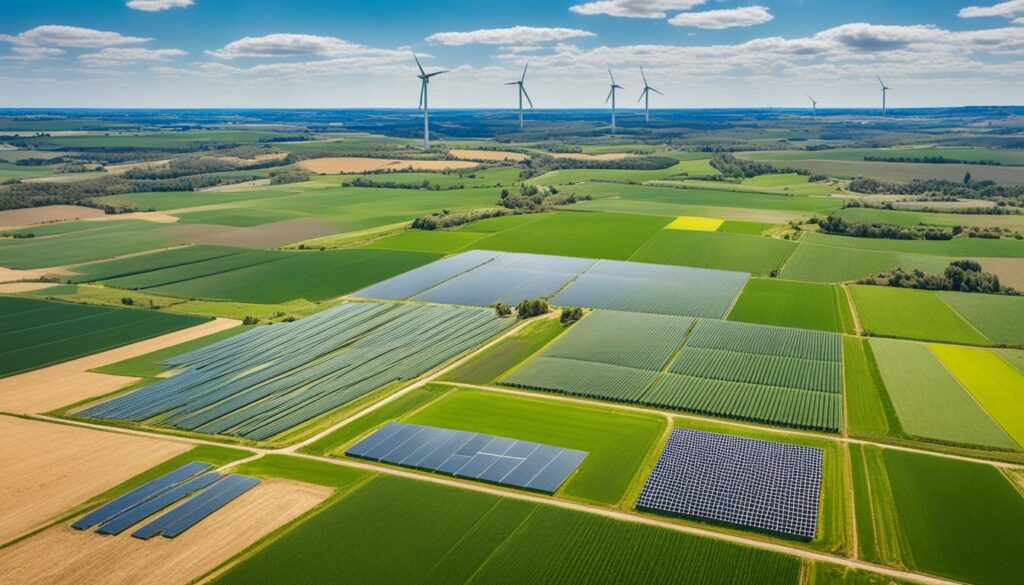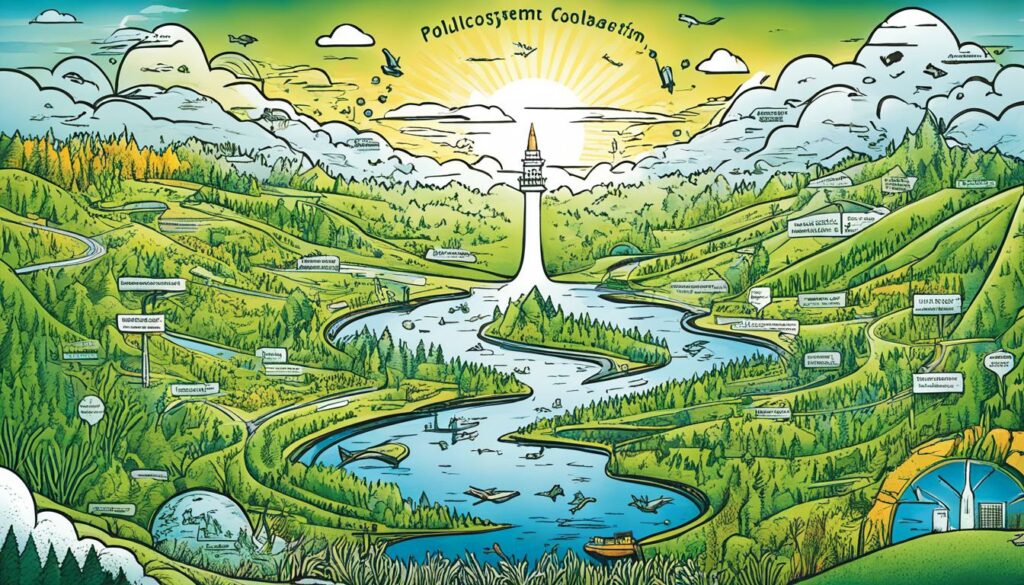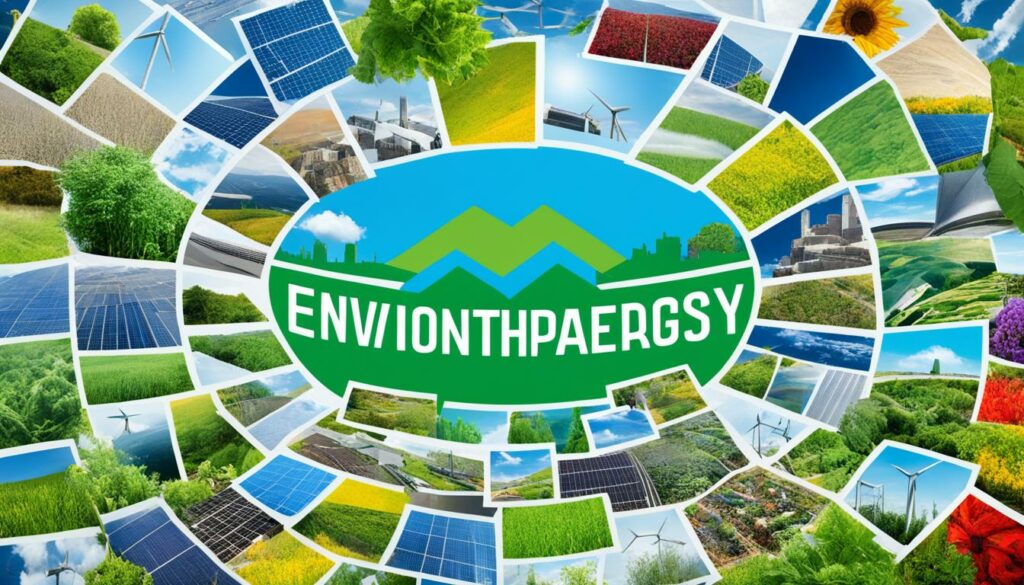Menu

As of 2017, the US spent around $441 billion on transport and water. Only 1-3% of the market share has been held by public-private partnerships (PPPs) since 1990. Yet, they can greatly reduce costs, speed up projects, and improve environmental rule compliance.
PPPs are getting noticed for their power to bring in private money. This helps get past budget limits and public spending rules. Private money in PPPs can quicken the start of key projects. But, these partnerships also move some hidden costs to federal taxpayers, mostly through federal money support.
The success of these partnerships depends a lot on their contracts. Bad contracts can bring big risks like companies going bankrupt, projects stopping, or bad outcomes for the public partners. Over time, the private sector has taken on less project risks. This makes us wonder if PPPs really save money and launch projects faster as they claim.
Public-private partnerships (PPPs) are team efforts between the government and private companies. They find ways to pay for, build, and look after big projects, like roads and services. These projects join the skills and resources of both sides.
These partnerships often have long-term plans. Money might come from the government, people who use the service, or both over the project’s life. A good example is Singapore’s TradeNet. Machines handle over 90% of customs work, making the system very quick and efficient.
PPPs also help in environmental and farming jobs. The Singapore story shows how 20 forms for international trade changed to just one online form. Private groups helped build and run the system. Here, businesses can do everything they need at one place, such as ports and airports.
Different PPP models are used, like managing a service, buying or leasing assets, or combining both. They aim to use private skills for better services. This helps improve the way things are paid for and run, bringing in new tech and supporting green infrastructure.
Take wastewater treatment, for example. By working together, the public and private group at these jobs have run better. They use money more wisely and do better work. The Thames Water in the UK and Manila Water in the Philippines are good examples of these successful projects.
But PPPs also have risks for businesses, like going over budget or not meeting the quality needed. Yet, they open doors to do public work better, bring in new tech, and help meet environmental rules for farming.
It’s crucial for agriculture to follow environmental rules. This helps protect nature and deal with climate change. When farms take care of the environment, they keep the soil healthy and the water clean.
In Pennsylvania, farmers see water quality as a big issue. They know they need to do their part to make things better. This means sticking to the rules to farm in a way that’s good for everyone. Many farmers are doing great at this, but there’s room to do better all over the state.

Across Pennsylvania, there are farms of all sizes, from small ones to big ones. They all work to look after the land. By doing things like keeping plants on the fields, they help water seep in and keep the soil strong.
But, some farmers in Pennsylvania are not following the laws about the environment. This slow down the state’s efforts to make the water cleaner. Helping more farmers to do what’s right is really important.
To make the water cleaner, we should focus on some areas more than others. This would help lower the harmful stuff in the water. It’s important to find ways to get farmers to use land next to water to help keep it clean.
Getting more money to reach water quality goals is a must. This is where working together with both public and private groups helps a lot. These partnerships can bring in money to support better farming ways. They’re key in making farming both green and good for the environment.
Public-Private Partnerships (PPPs) bring private companies together with the government. They work on projects like building new schools or hospitals. The goal is to share the job, to make it less risky and more efficient. By joining their efforts, they can provide better public services and build needed infrastructure.
A PPP combines the private sector’s business skill with the public sector’s need to serve people. This way, projects get done well and cost less. The World Bank has tips for making PPPs work well.
PPPs have come a long way from simple contracts to major worldwide agreements. Countries have formed special laws and teams just for these projects. The UK and Australia have very good PPP setups, which other places have used as examples. Learning from what has happened before helps make future projects better.
In a good PPP, everyone has a key role: the government, private partners, and those who use the new services. Careful planning, clear goals, and fair risk-sharing are essential from start to finish. This ensures the project is successful and provides long-lasting benefits.
Looking back at how PPPs have grown, it’s clear that using a team approach works best. When public and private groups work together well, everyone wins. It helps face problems and creates a path for sustainable growth.
| Aspect | Government Role | Private Sector Role | End-User Benefits |
|---|---|---|---|
| Design | Sets public service standards | Leverages innovation and expertise | Gains access to advanced infrastructure |
| Build | Provides regulatory oversight | Executes project construction | Receives timely project delivery |
| Finance | Offers fiscal incentives | Supplies necessary capital | Experiences cost-saving benefits |
| Operate | Ensures compliance | Manages day-to-day operations | Enjoys consistent service quality |
| Maintain | Monitors long-term goals | Handles upkeep and upgrades | Sees sustained infrastructure performance |
Public-Private Partnerships (PPCs) offer big benefits by using both public and private skills. They drive down costs and bring new ideas to green projects. This mix makes building in a green way easier while sticking to the rules.
PPPs save money by working together smarter. They make sure resources are used well and bring in new tech and ideas. This makes projects better all the time because of the innovation the private sector brings.
Projects finish faster through PPPs. Public and private groups team up to get things done quicker without skimping on quality. Legal systems that support this, advised by groups like the World Bank, help keep things on track without hurting the environment.

PPPs are great at handling risks. They split the work, which means everyone is careful to meet green goals. This way, projects are not just good for now. They keep helping the world and people for a long time.
| Statistic | Relevance |
|---|---|
| Countries adopting PPP laws | Enhances legal framework for better project implementation |
| Guidance from World Bank | Provides essential advice on regulatory compliance |
| Well-resourced PPP units | Increases chances of building a strong project pipeline |
| Private sector funding | Brings financial resources to environmental projects |
| North Carolina support for PPPs | Reflects public approval and unification for infrastructure upgrades |
Public-Private Partnerships (PPPs) are becoming more common across the globe. However, they face many challenges. These require close attention and fair management. The problem often starts with the contracts being unclear. This can cause arguments and high costs, which harm the project.
Countries like South Africa and Brazil have shown that strong legal rules are important for successful PPPs. The World Bank advises on these rules. Yet, it’s hard to say which factor helps PPPs the most.
In PPPs, sharing risks fairly is vital. The World Bank helps countries deal with issues like getting private companies involved. But, reports show that even with rules in place, PPP deals don’t always go smoothly.
Keeping things open and fair is a must. Without it, the private sector may only think about saving money. This could lead to trouble with the environment and less control from the public. Good PPP setups should help find money for projects, share the risks well, and manage investments properly.
“Well-designed PPP frameworks are expected to facilitate the mobilisation of infrastructure financing, optimal allocation of risks, and sound public investment management.” – World Bank
PPP success is all about good management. Having clear contracts and sharing risks well can help. This makes sure that both public and private groups work together well.
Here’s a look at specific parts of PPPs that matter:
| Aspect | Importance | Challenge | Possible Solution |
|---|---|---|---|
| Contractual Clarity | High | Misinterpretation of terms | Drafting comprehensive contracts |
| Risk Allocation | Medium | Unequal risk distribution | Equitable risk-sharing frameworks |
| Accountability | High | Lack of transparency | Maintaining open communication channels |
| Regulatory Alignment | Medium | Inconsistent reforms | Benchmarking and updating legal frameworks |
To overcome PPP challenges, we must focus on these key areas. This way, both the public and private sides can benefit fully from working together.
Studying PPP success stories shows us how they can transform the environment. Many countries now have laws for PPPs. They support these partnerships with special units. This helps them get resources and set up detailed checks. In places like South Africa, Chile, Brazil, Australia, and South Korea, PPPs need support from leaders. They also need wide-reaching changes to be successful. Here are some examples showing how PPPs are good for the environment.

The Ouarzazate solar project in Morocco is a big win for the environment. It shows us how PPPs can boost renewable energy. The mix of public and private money has helped a lot. It’s pushed a ton of cash towards making more green energy. This has been a big help in Morocco’s move to be less dependent on carbon fuels.
The 407 ETR in Canada is another great PPP success. It’s a long-term plan that looks after a busy toll road. This project highlights the good PPPs can do in making our roadways smoother and safer. It keeps a close eye on green rules too. All thanks to how it’s managed.
The GGF is a PPP all about supporting clean energy and saving resources in Europe and the Middle East. It’s a great example of how PPPs can focus on making a green difference. The World Bank is behind part of this effort, helping to make new green projects possible. And they keep on working to make sure everything is done right. This is making the GGF a top choice for similar projects.
| Case | Region | Sector | Key Outcome |
|---|---|---|---|
| The Ouarzazate Solar Project | Morocco | Renewable Energy | Advanced climate finance and renewable energy production |
| 407 Express Toll Route (407 ETR) | Canada | Transportation | Improved infrastructure and environmental standards compliance |
| Green for Growth Fund (GGF) | Europe and Middle East | Energy Efficiency | Promoted green investment and regulatory alignment |
Agri-environmental PPPs are changing how we look at farming’s impact on the environment. They mix public, private, and farmer efforts. This approach brings new tech and smart methods to reduce harm to the environment and use resources better.
A key study, published recently, points out the benefits of these partnerships. It was put together by five of us, including experts in farming and business. The work covers nine chapters, focusing on the management and running of these partnerships, especially in Chapters 7 and 8.
There are big plans and lots of money set to help make farming greener. The Regional Conservation Partnership Program (RCPP) is putting over $1.5 billion into projects by 2024. This support will help over 180,000 farms become more environment-friendly in the next five years.
By November 2023, 81 projects in the US had already got more than $1 billion. In 2024, the focus is on eco-friendly farming, farming in cities, and making sure the environment is protected. Farmers’ strong interest in these projects shows how much they want to be part of this green future.
A big part of the study looks at successful projects around the world. These projects show how working together can make farming better for the environment. They also show how everyone, from farmers to business owners, benefits when we focus on eco-friendly farming.
To sum up, linking farming with environmental care through PPPs has many pluses. It not only improves farming but also makes sure nature is protected. This mix of public and private effort is leading us to a future where farming is both strong and green.
The government plays a key role in making public-private partnerships (PPPs) work well. It has set up special laws and units for PPPs over the years, showing it is serious about this approach. This has been happening around the globe.

Places like South Africa, Chile, and South Korea have strong rules for PPPs. These rules help everyone involved know what to do and make the legal side easier. The World Bank also says good rules are a key part of making PPPs work.
The new Infrastructure Development analysis from the World Bank will talk about how good rules make it more likely for businesses to join in. This shows just how important these rules are.
The government does more than just set rules for PPPs. It helps make sure PPP projects meet public needs and run well. The World Bank helps by checking what a country needs, fixing rules as necessary, and finding good PPP projects to invest in.
Creating the right setting for PPPs to work is also the government’s job. This means building trust and making sure everything is open and fair. The government should also keep an eye on how things are going to catch any problems early. PPPs often last 20 to 30 years. For example, the 407 Express Toll Route in Canada’s deal was for 99 years.
In short, the government’s work with PPPs is key. Good rules and working together help PPPs do great things for building and running important services.
Private businesses are working more with governments to deal with environmental problems. This partnership is key to fighting global challenges. They help meet sustainability goals and follow the laws.
Especially in poorer countries, farmers often pay for their own green projects. This private help is vital. It lets farmers use better practices and follow the rules. For example, a project in the Western Lake Erie Basin helped a third of farmers in just two years.
More people will live in cities by 2050. This means we need to build in a way that doesn’t harm the planet. The private sector is pushing for these eco-friendly city projects. They are helping meet the needs of urban life while protecting the environment.
In India, over half of farmers need loans. Those who borrow from banks earn more. Green projects funded by businesses are important here. They help the land and the people who work it. For example, a project in Bangladesh offers help and new farming tech to those who farm someone else’s land.
Banks that help with the environment made up a third of the money in 2013. Their help is needed to make big changes. This money helps businesses grow in a way that’s good for the planet. It also teaches others how to fight climate change.
In short, businesses working with the government is crucial for a greener tomorrow. Their work makes sure everyone does their part. It boosts green projects and sets the stage for a lasting, earth-friendly future.
Public-private partnerships (PPPs) help push towards sustainable farming. They offer many incentives for innovative farming. Nearly 18,000 papers looked at what helps farmers go green. Governments, NGOs, and banks give out incentives. These can be in the form of subsidies or technical support.
PPPs are key in developing new farming methods that are kind to our planet. Practices like precision farming and efficient water use are getting more popular. They don’t just protect the earth but can also boost the harvest. Companies also have to follow environmental rules to benefit everyone.
The private sector is doing more for the environment. Companies are joining in on green farming to meet their social duties. They work with others to introduce eco-friendlier ways of farming. This also means more resources and ideas are up for the challenge.
Looking after the planet for a long time is key for farmers. They are paid extra for meeting environmental goals. Thanks to groups like the USDA, big projects in farming have become more eco-friendly. These projects are saving a lot of greenhouse gases. They are a big step towards a future in farming that’s good for everyone.
PPPs really matter for making farming sustainable. They bring governments and companies together to help the planet. By focusing on the future of farming, they make sure agriculture grows strong and safe for the long run.
When looking at PPP financing options, choosing the right funding method is crucial for success. International experiences highlight various financing methods used in successful PPP projects. These include different investment sizes and shares.
How to finance a PPP can make a big difference. Options can include using public money, specific financing for the project, or new ideas like green bonds. The choice impacts how well the partnership works. It affects getting funds, handling money risks, and making sure projects last when aiming to fund sustainable infrastructure.
Looking at the numbers, PPP projects in healthcare and education mainly use 5% capital shares. But, for building projects, it goes up to 20%. For these building projects, loans are usually 70-80% of the total. This shows they mostly rely on borrowed money.
In the UK, two-thirds of EU investments in public-private partnerships came from 1990 to 2011. By 2011, France had a strong showing, funding 62% of PPP projects in Europe.
In countries like India and China, PPPs are popular, especially in energy, roads, and water projects. The World Bank says almost 2.8 thousand PPPs were started in these countries from 2010 to 2018.
Here’s a simple comparison to show the difference in financing:
| Financing Component | Healthcare & Education (%) | Infrastructure Projects (%) |
|---|---|---|
| Equity Capital Share | 5% | 20% |
| Loan Share | 70-80% | 70-80% |
Syndicated lending is key in PPPs. It lets big banks share the risk, which makes it less risky and cheaper to fund. But, the high risk in some projects in developing countries can make funding tough. This leads to big problems in getting enough money.
“Well-designed PPP frameworks can significantly facilitate the mobilisation of infrastructure financing, ensure sound public investment management, and optimise risk allocation,” as emphasised by recent World Bank guidance.
In the end, picking the right PPP funding and investment model is vital. It’s key to making sustainable projects succeed in all areas. This choice affects the project’s overall success and how long it lasts.
Good risk management is key for public-private partnerships (PPPs) to work well. It’s all about sharing and reducing the risks. This way, both sides can deal with problems better and keep their investments safe. Having strong contracts and plans in place is very important. They make sure everyone is ready and protected.
In PPPs, how risks are divided is crucial. Every partnership should make it clear who handles which risks. Generally, private groups take on risks like building and running things. The public sector deals with rules and policy risks. Planing ahead with things like emergency plans and security deposits can lower these risks.

Having solid contracts is very important in PPPs. These should cover who does what, how well they should perform, and how to solve problems. If needed, they should also explain how to change the contract. Good contracts stop costs going up too much, make sure rules are followed, and look after everyone’s interests.
Looking at past PPPs can teach us a lot about risks. We’ve learned that problems like too hopeful budgeting and not checking long-term risks enough can hurt projects. Using certain money methods and keeping an eye on spending can help. It’s shown us that clear contracts and checking risks really well are key to PPPs that do well.
| PPP Types | Risk Allocation | Performance Metrics |
|---|---|---|
| Value Chain Development | Private sector handles operational risks, public sector oversees policy risks | Market penetration, revenue generation |
| Technology Transfer | Private sector manages technological risks, public sector provides regulatory support | Innovation adoption, long-term sustainability |
| Market Infrastructure | Risk shared based on investment scale, public sector handles legal risks | Infrastructure quality, user satisfaction |
| Business Development Services | Public sector offers financial safeguards, private sector ensures service delivery | Business growth, service efficiency |
Involving the public in Public-Private Partnerships (PPPs) is key. It helps ensure projects’ success and their sustainability. By clearly telling people about the positives and negatives of PPPs, we can get more support. This transparency in sharing information also helps build trust and encourages people to join in.
Talking about Public-Private Partnerships means pointing out the good and the bad. It’s very important to keep communication open, making complicated things easier to understand for everyone. Everyone should know the project’s aims, what we expect, and the challenges we face.
Getting locals involved in environmental projects is a big plus. They share insights and provide support that improves project work and keeps an eye on it. Having them in decisions also makes the project more theirs, creating a feeling of responsibility. This is important for the project’s future success.
For PPPs to really work, they need to be transparent and accountable. A clear plan for who is responsible ensures everyone follows the same rules. This builds trust and keeps the community involved to meet goals faster and more effectively.
In the future, new ideas in public-private partnerships (PPPs) will help deal with environmental issues. Many countries are making laws for PPPs and setting up special teams.

Countries like South Africa, Chile, and others have good rules for PPP projects. The World Bank also supports these efforts. It’s hard to say exactly what makes PPPs work, but we know they need strong support from leaders.
One big future trend is using more digital technology. For example, in cleaning wastewater, teams are starting to use better methods. They’re also adding sensors to watch things in real-time and make the work more efficient.
“PPPs are showing considerable promise in bridging the financing gap for innovative environmental solutions and achieving sustainable development goals,” notes the World Bank in their global assessment.
In the future, PPPs will focus on finding new ways to pay for projects and making sure everyone is included. An example is how Thames Water in the UK made their plants better through a PPP. Other countries have had similar good results.
Most of the future work will focus on reusing resources. This fits with the new ways to make sure companies meet environmental rules. While some worry about costs, most agree that PPPs are key for long-lasting and clever solutions.
| Country | PPP Framework | Key Successes |
|---|---|---|
| South Africa | Robust Legal Framework | Infrastructure Development |
| Chile | Established PPP Laws | Public Service Efficiency |
| Brazil | Dedicated PPP Units | Cost-Effective Projects |
| Australia | Comprehensive Policies | Technological Integration |
| South Korea | Strong Institutional Support | Timely Completion |
To be ready for the future, we must be creative in our PPPs. We need to keep finding better ways to work together. Doing this will make sure PPPs are successful in the long run.
Public-private partnerships (PPPs) have made a big impact on how we deal with the environment and grow sustainably. They bring together the rules of the government and the creativity of businesses. This mix helps tackle green issues and pushes for eco-friendly approaches. My analysis of a 2016 report, ISBN: 978-92-5-109252-1, shows how agribusiness and governments work together. It talks about the rules, the good parts, and the tough bits.
This report looks at real-life stories that show how PPPs help care for the environment in farming. It uses charts and pictures to explain how different kinds of partnerships work. This evidence is key in seeing how well these teams help us meet green goals. Going forward, we need to learn from this to build stronger and fairer partnerships.
Closer looks show more countries are making laws and teams just for PPPs. Places with strong laws and lots of PPP projects are setting a good example. The World Bank also gives tips on making good laws for PPPs. It helps make rules that support looking after the planet. We must use these tips to push for better and long-lasting care for the environment through PPPs.
Public-Private Partnerships are when the government and private companies work together. They join to fund, build, and run big projects. These can be things like roads, schools, or water services. By working together, they use the best ideas from each side. This helps get things done well and on time.
PPPs in farming bring new and better ways to grow crops and raise animals. These methods aim to use less of the Earth’s resources. So, they protect the land and water, making sure farming doesn’t harm the environment. This way, farms can keep going for a long time without hurting our planet.
A successful PPP links what the public wants with what a company gains. This means both sides need to have clear benefits. They also have to agree on how to share and deal with any risks. Also, a lot of planning and a long plan is needed. This helps make sure the project works well for everyone involved.
PPPs help the environment by dealing with projects quickly and with good quality. They also help control costs and risks well. By using new and better ways to do things, they make sure projects meet strict rules. This means they have a good impact on the environment for a long time.
PPPs can face several issues. One challenge is making sure all risks are shared fairly. Finding terms that satisfy both the government and the private sector can be difficult. Also, it’s important to keep things open and to make sure the costs are worth the long-term benefits for the environment.
Sure, there are great PPP projects worldwide. The Ouarzazate solar complex in Morocco is a big success for renewable energy. In Canada, the 407 Express Toll Route shows how well a private-public road project can work. The Green for Growth Fund also helps many green projects in Europe and the Middle East.
The government is key in making PPPs work. They set the rules and help build a team spirit between the public and private sectors. This makes sure that these partnerships match public needs and are legal and successful. Without the government, PPPs wouldn’t work as well.
The private sector brings valuable skills and funds to help the environment. Their expertise and efficiency speed up meeting environmental rules. This means our planet benefits faster with their help.
There are many ways to fund PPPs. They can use government money, special bonds, or funds made for the environment. The way the project is financed affects how well it can solve environmental problems. It’s important to choose the best financial plan.
Good risk plans in PPPs make sure everyone knows their role and how to avoid problems. They have strong contracts to protect everyone. Learning from what didn’t work in the past is also key. This makes sure PPPs are a safe and beneficial way to work together.
Getting the public involved and informed is crucial for PPPs to succeed. It builds support and trust. People living near these projects get to have a say. This makes them more likely to like what’s being done in their area.
In the future, PPPs will focus more on new green ideas and including more people in decisions. They will find better ways to pay for these projects. New technologies and practices will make these partnerships stronger and better for the environment.